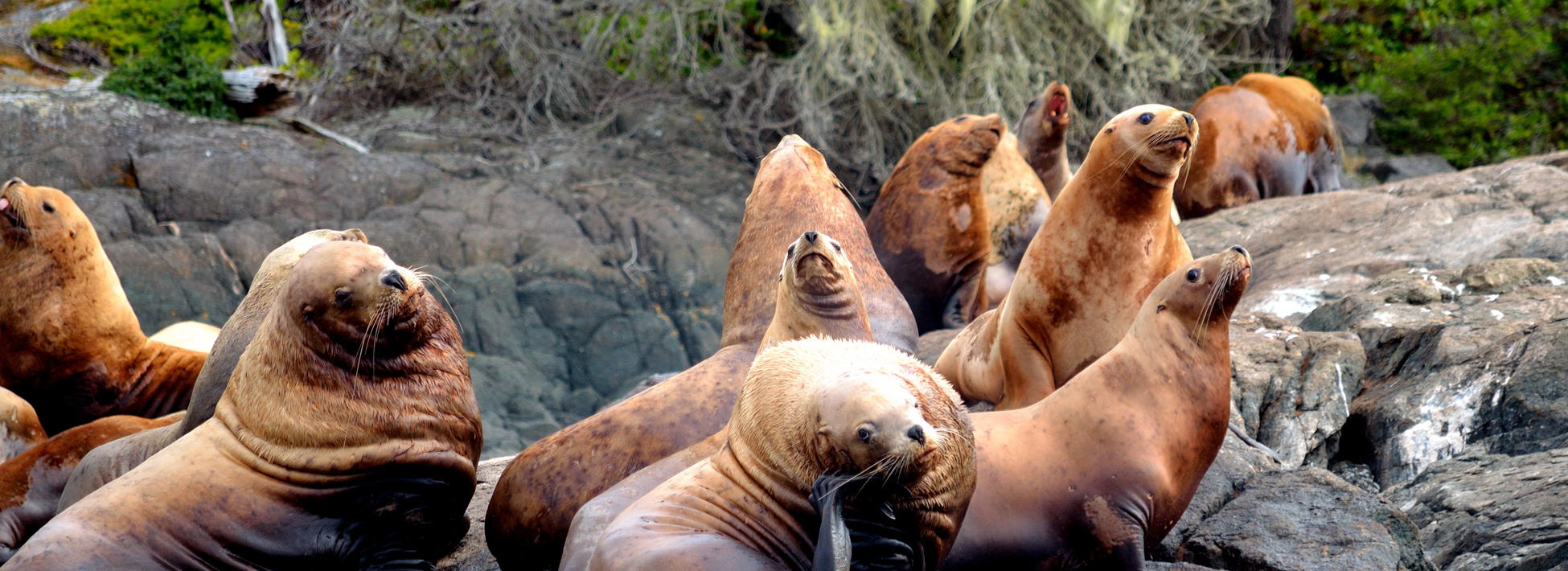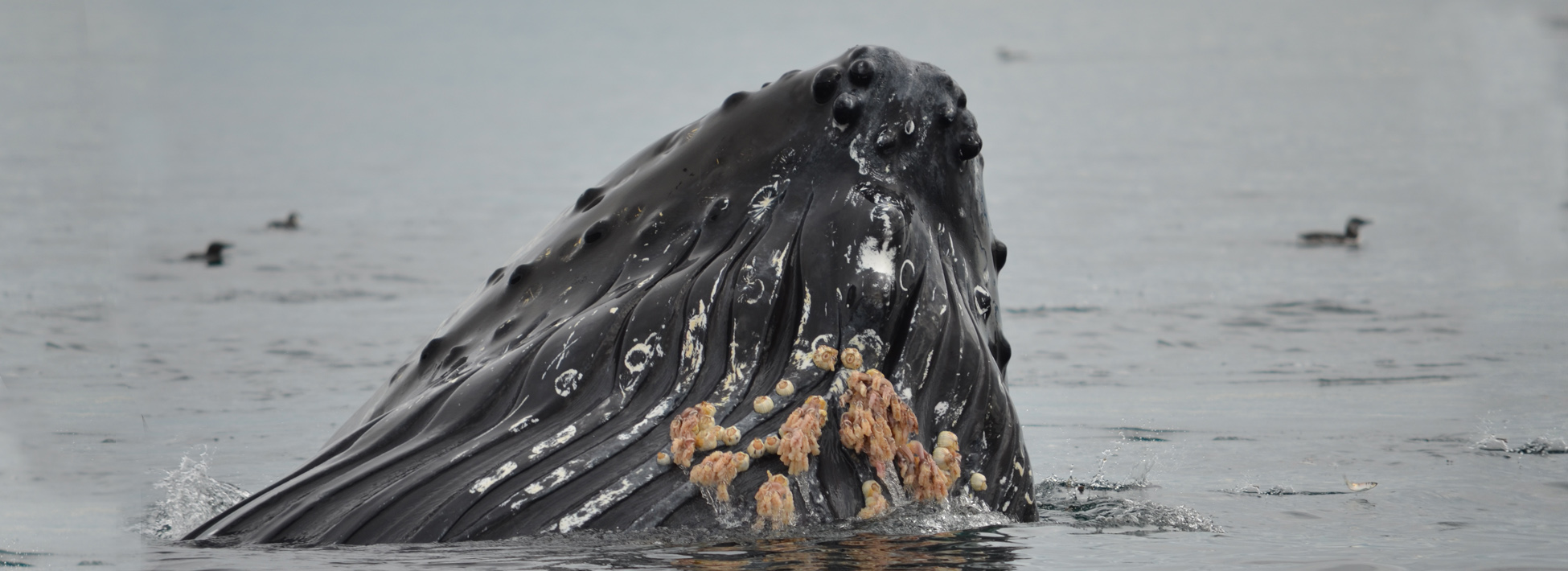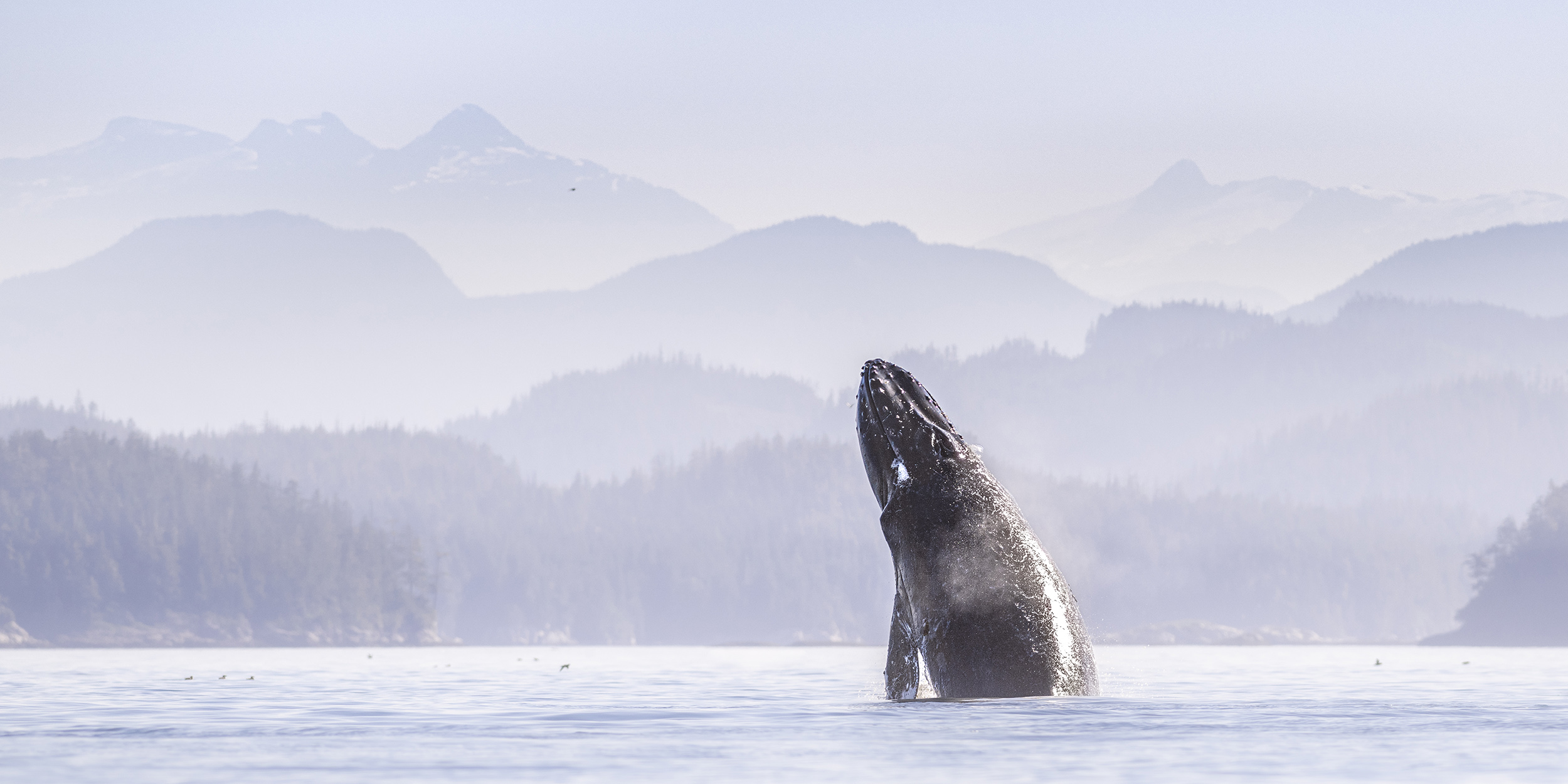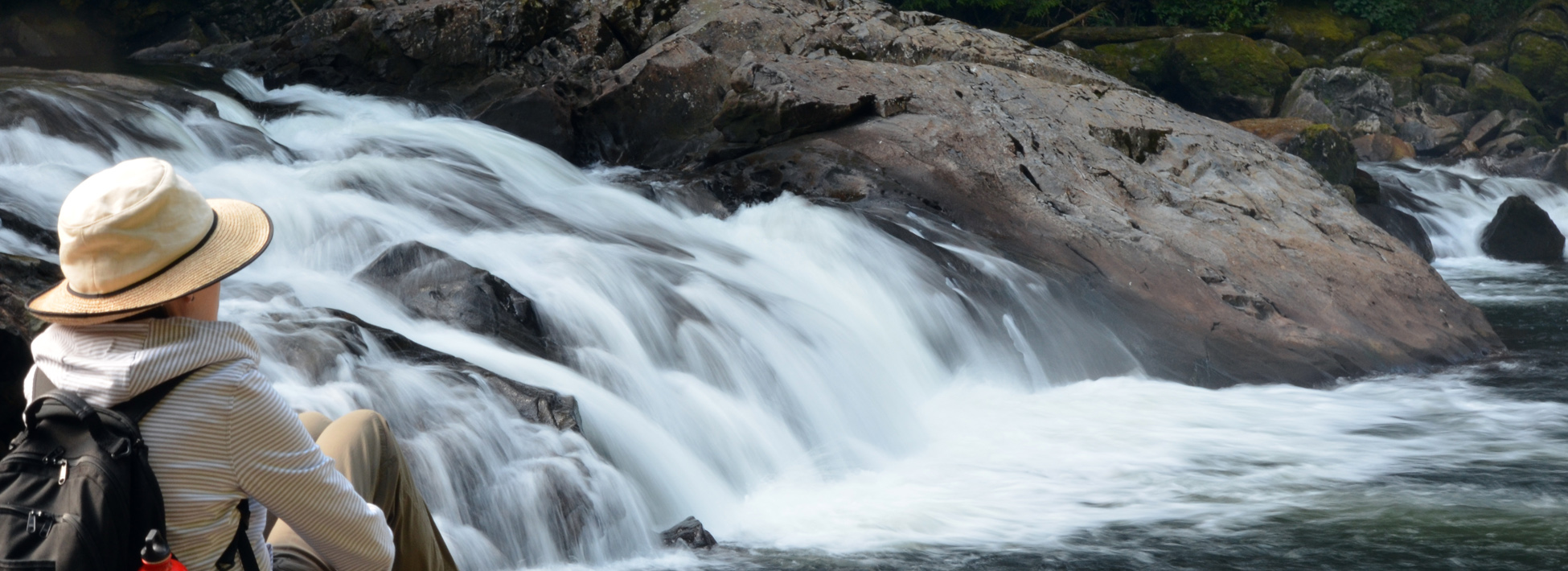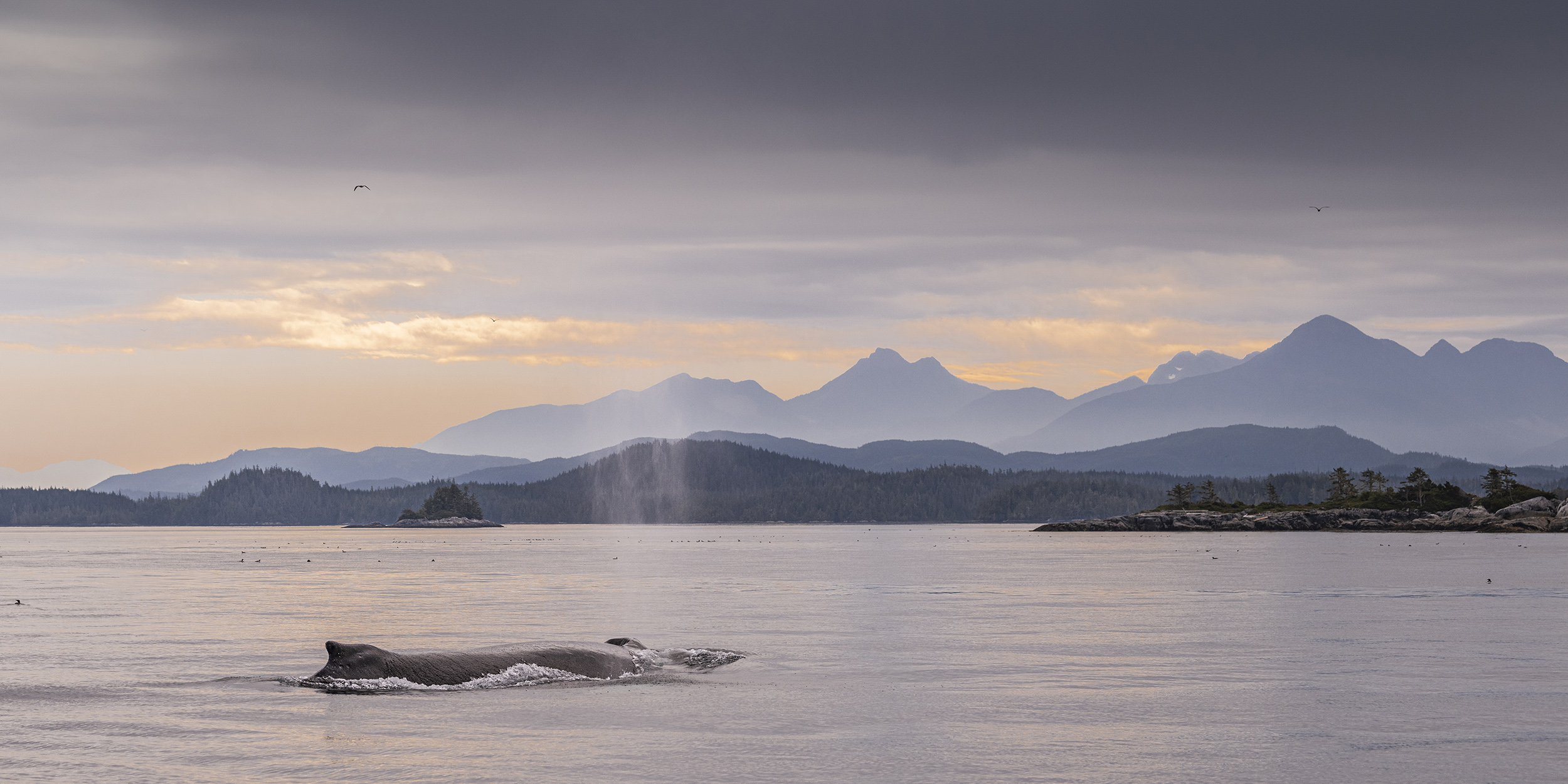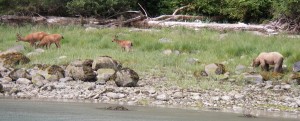Most of the grizzly watching tours from the lodge arrive at the River estuary on Knight Inlet and view the coast black tail deer. The sedge grass is high in protein and provides an excellent food for both deer and grizzly bears. It is the main food sources for grizzlies along with the protein from turning of rocks. The three male deer on the beach with a young grizzly seem to be keeping their distance for a quick get-away.
Bald Eagles

Bald Eagles are frequently sighted in our area. At times they can be seen in large numbers. This is usually where food supplies are high. For example this could be in areas with high concentrations of baitfish or along the rivers in the fall when the salmon are spawning. They are not migratory, but do move around with the food supply. As mentioned earlier when the salmon are spawning we often see many along the rivers, while there will be fewer along the coastline. With little need for camouflage their white head and tail feathers can be spotted easily. The female is slightly larger and her white head extends down a bit farther onto the body, but it is subtle. It takes these birds 4.5 – 5 years to acquire this unique plumage. As juveniles they are a brown colour. With exceptional eyesight and the ability to view 270 degrees they are understandably often seen in high perches and in trees near points and passageways.
Visit our Blog